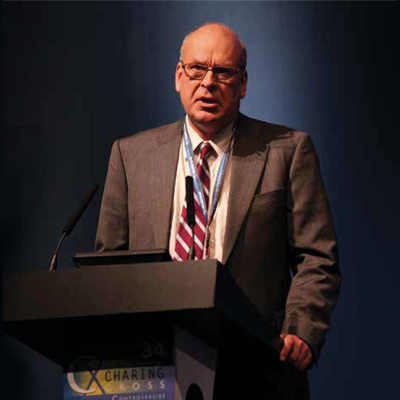
Interview with STILLE Ambassador Thomas Larzon MD, PhD
Thomas Larzon, head of Vascular Surgery Department of Cardio-Thoracic and Vascular Surgery, Örebro University Hospital, Örebro, Sweden, has performed vascular and endovascular procedures on a mobile operating room for the last 17 years and in 2012 did all the EVAR cases using a C-arm mobile solution and the Stille imagiQ surgical table. In this interview, he spoke about the results achieved in Örebro, his preference for a mobile equipment, his experience with the imagiQ table, and the importance of reducing radiation exposure to patients and staff.
Örebro is an experienced centre for EVAR, with most of the aneurysm cases being treated in an endovascular fashion. What have the key factors of success at your centre the last 10 years been?
We have been performing vascular procedures on a mobile solution for the last 17 years. Having the possibility to have control over the infrastructure of the operating room (OR) and its equipment and thanks to innovation of these devices, we have been able to do all kind of procedures in one environment, converting from endovascular to open surgery quickly and with total freedom. With the use of state-of-the-art equipment we can be confident in taking the endovascular technique forward: Last year we did 100% of all aortic procedures with endovascular approach using a mobile solution (the GE Healthcare OEC® 9900 Elite MD mobile C-arm and the Stille imagiQ surgical table).
How has the mortality rate for EVAR improved in Örebro over the last 10 years, and how are you performing in comparison with other hospitals?
For elective surgery, the mortality is less than 1%. For ruptured aneurysms we have decreased the mortality rate to 25% (from historical figures of 45% to 50%), which is a medical revolution. The number of patients rejected for emergency procedures (ruptured aneurysm) has decreased significantly and in the last three years only 4% of the cases were rejected. This means that today, almost everyone at our centre can be offered a procedure.
The difference between this and other centres is the degree of complexity of the procedures performed and the fact that we receive patients who are older and, in many other places, would have been rejected. Our long experience with this technique means that our results are outstanding even in an international comparison. We have performed workshops and other educational international events at our hospital to train other surgeons on these techniques.
